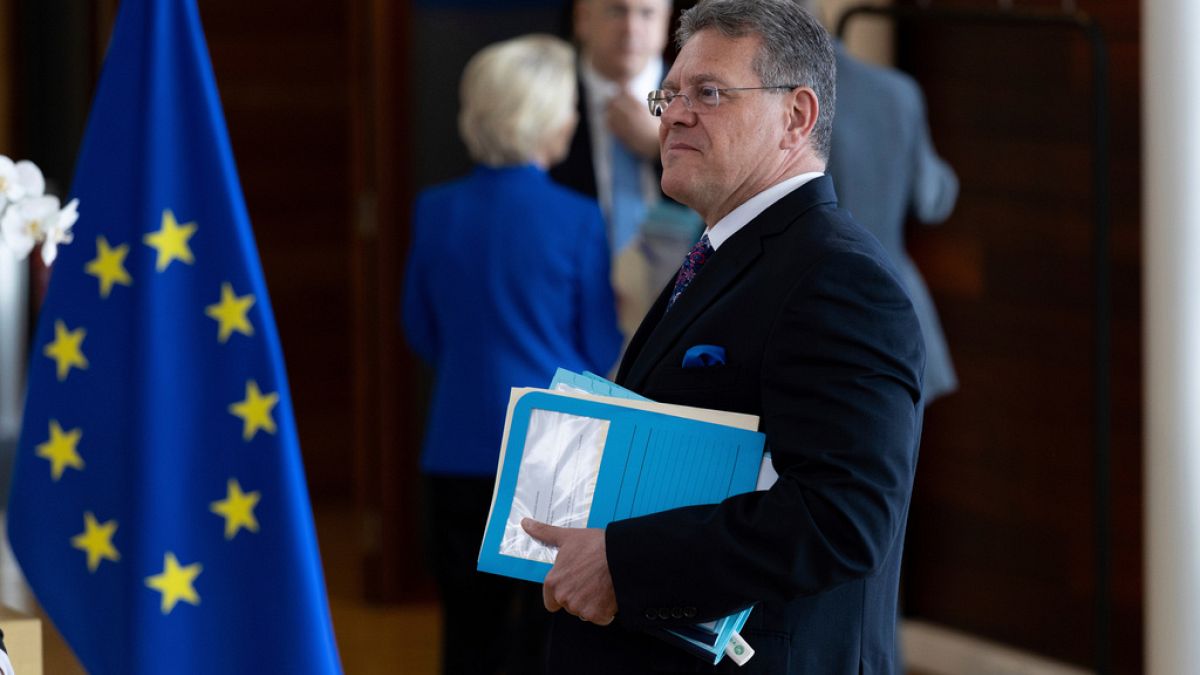Business
Column: An exhaustive debunking of the dumbest myths about Social Security

Myths and canards about Social Security and its supposed fiscal troubles have steadily proliferated over the years. But it’s rare to find them all concentrated in one place as they were in a recent article on the online news site Slate.
Slate paired Eric Boehm, a writer for the conservative magazine Reason, with a writer named Celeste Headlee for a dialogue titled “Social Security Doesn’t Make Sense Anymore.” The roughly 2,000-word piece contained so many misconceptions, inaccuracies, misrepresentations, and flat-out lies about the program that I almost gave up counting. That said, it’s perhaps worthwhile to have a one-stop shop for all these solecisms, if only for the purpose of debunking them en masse.
Most people 65 and older receive the majority of their income from Social Security.
— Kathleen Romig tells the truth about Social Security that Slate missed
The article called for a “radical rethink” of Social Security to make it somehow more relevant to Americans in the modern world. Boehm and Headlee evidently think that’s a world in which America is on the brink of insolvency and can’t afford to spend another dime on the disadvantaged, that Social Security recipients are rich, and that older Americans can have their pick of jobs that will keep them happy and healthy indefinitely.
Slate says their dialogue was “edited for clarity,” but the only thing it made clear is that neither of them knows the first thing about Social Security. More alarming, they showed no inclination to learn.
There isn’t space here or time for me to list every solecism in the piece, so I will focus on some of the most egregious errors.
—“People who are young and working … are funding the retirement of generally wealthier Americans.” This notion was popularized by former Sen. Alan Simpson (R-Wyo.), who went around calling Social Security beneficiaries “greedy geezers” and disdained the program as “a milk cow with 310 million tits.”
The underlying idea is that the average Social Security beneficiaries are doing better than the poor souls in the working class who are paying for their lives of leisure through their payroll taxes. It’s commonly reported that retirees are, on average, the wealthiest cohort of Americans.
Here’s what’s wrong with that idea: The reason that so many seniors are able to live comfortably is because they receive Social Security.
As Kathleen Romig of the Center on Budget and Policy Priorities has reported, “most people 65 and older receive the majority of their income from Social Security.” The poverty rate among Americans older than 65 is 10.3%. Without Social Security, it would be nearly 38%. To put it another way, Social Security keeps more than 15 million seniors out of poverty.
The average Social Security monthly check is $1,709.70, which works out to $20,516 a year. That’s about $800 more than the federal poverty line for a family of two.
The idea that cutting off the wealthiest seniors or at least reducing their benefits would help save Social Security is a popular myth, with recipients like Warren Buffett and Bill Gates the most common illustrative targets. The goal is to promote “means-testing” the program.
But myth it is. As of 2017, about 47,500 millionaires were receiving Social Security. Their total benefits came to about $1.4 billion, or about 15 hundredths of a percent of the $941 billion in benefits the system paid out that year. If you’re intent on “saving” Social Security by means-testing, you would need to start cutting off or reducing benefits for recipients earning about $70,000 a year in non-Social Security income — not millionaires.
Boehm backed up his thoughts on this topic with some suspect data. He cites the Federal Reserve in asserting that “the average value of a retired person’s assets” today is $538,000. Hmm. My reading of the Fed’s latest digest from its Survey of Consumer Finances, issued just last month, places the median net worth of those aged 65-74 at about $410,000; for those 75 and older, it’s $335,600.
Does that make them rich? Using the common rule of thumb that one can spend 4% a year of retirement savings to have the best chance of not outliving your nest egg, $410,000 produces $16,400 a year. Not the basis of a lavish lifestyle. Even a nest egg of $538,000 doesn’t make for a life of leisure — in one’s first year of retirement the 4% rule would yield $21,520.
—Just raise the retirement age? Boehm: “When Social Security began, you could get benefits at age 65, but the average life expectancy in this country was like 61. So the average person actually died before they qualified for Social Security.” This is another quacking canard from the Simpson duck pond.
Average life expectancy from birth in 1940, when the first Social Security checks went out, was about 63 and a half, which I suppose is “like” 61. But that figure was skewed lower by high infant mortality; Boehm acknowledges this, but doesn’t bother to explore its ramifications, perhaps because it explodes his take.
For Americans who made it to their first birthday back then, average life expectancy was nearly 66. For those entering their working careers, say at age 20—the relevant cohort for assessing the chances of collecting Social Security — it was nearly 69.
In other words, the average person did not actually die before qualifying for Social Security; the average person collected for years. Indeed, those who were 65 in the late 1930s lived on average nearly to 78.
Anyway, life expectancy is closely connected to race, educational attainment and income. Those who live longest are whites, college graduates and the affluent. Raising the retirement age is a curse on those who don’t fall into those categories. White people aged 65 have gained more than six years of longevity since the 1930s; Black males only about four years.
By the way, what are workers supposed to do while they’re waiting longer to reach retirement age? Leaving aside the impact of age discrimination that makes it harder for older people to obtain or keep jobs, the Census Bureau has reported that more than half of all workers aged 58 or older were in physically demanding jobs or jobs with difficult working conditions — more than 13 million workers.
As economists Cherrie Bucknor and Dean Baker pointed out in a 2016 paper, “the workers who were most likely to be in these jobs were Latinos, the least educated (less than a high school diploma), immigrants, and the lowest wage earners.”
I don’t know what Boehm’s working conditions are like, but I’d bet they don’t “require dynamic, explosive, static, or trunk strength, bending or twisting of the body, stamina, maintaining balance, or kneeling or crouching” or involve “exposure to abnormal temperatures, contaminants, hazardous equipment, whole body vibration, or distracting or uncomfortable noise.” It’s easy to think that everyone else should work harder, if your frame of reference is your own office desk.
—Social Security is “a welfare program”: Boehm pushed this idea hard. “You would never build a welfare program, you would never get Congress to approve the construction of a new welfare program, that took money directly from the paychecks of workers and transferred it to a wealthy cohort somewhere in this country,” he says.
There’s a manifest danger in calling Social Security a welfare program. That’s because welfare programs are easiest to axe when conservatives go hunting for budget cuts — Americans typically view them as serving layabouts and malingerers at their expense.
Social Security is nothing like a welfare program, however. It’s a contributory system, funded entirely by its beneficiaries through the payroll tax. Its benefits are tied to lifetime contributions. That’s why billionaires get it, too — they contributed to it during their working lives. Nor is it only an old-age pension: It encompasses disability benefits and insurance to cover spouses and children when their breadwinner suffers an untimely death.
Before Republicans started casting “entitlements” as a dirty word, Americans saw their entitlement to Social Security benefits as a blessing — most still do. They’re entitled to it because they’ve paid for it with every paycheck.
The idea that the system represents a war between seniors and younger generations is just wrong. Whatever fiscal problems face Social Security, it’s because it’s exploited by the wealthy at the expense of everyone else.
In 1937, when the payroll tax was first collected, it applied to about 92% of all earned income. By 2020, that figure had fallen to 83%, largely because of an increase in income inequality. Were the payroll tax to be restructured to cover 90% of earnings, as the Congressional Budget Office reported last year, that would produce an additional $670 billion in revenue over 10 years; raise it to cover all annual earnings over $250,000, the gain would be $1.2 trillion — all without cutting benefits by even a penny.
—Social Security “is going to hit a brick wall in the 2030s.” This is Boehm’s gloss on the familiar projection that the program’s trust fund will run out some time in the middle of that decade. Is that a “brick wall”? Hardly: At that point, the program will still be guaranteed enough revenues to continue paying three-quarters of all scheduled benefits.
That’s a middle-of-the-road estimate. The system’s actuaries have also projected that given alternative demographic and economic assumptions — including assuming the unemployment rate and economy stay where they are today and immigration rises closer to its historical norm, the program might even be able to pay all benefits indefinitely.
—”The cost of Social Security is … ballooning quite rapidly”: This holds no water at all. The CBO projects that Social Security benefits as a share of gross domestic product, currently 5.1%, will rise to 6.2% by 2053. If that’s a balloon, it’s inflating pretty slowly.
In that time span, incidentally, GDP will more than triple to $79.5 trillion from $26.2 trillion, according to the CBO.
Boehm’s argument is that Social Security is becoming such a fiscal burden that it’s “killing the safety net.” He says, “There’s not enough money to go around,” which is absurd to say about the richest nation in world history. He says the cost of Social Security and Medicare, which he seems to think, erroneously, are related programs, is “pushing other things to the budget into a territory where we have to borrow more money to pay for them.”
That’s obviously not so. We wouldn’t have to borrow if we took such reasonable steps as repealing the 2017 tax cuts for corporations and the rich that drove a hole into the federal budget, or started charging the wealthy for their fair share of Social Security. He mentions that Americans have experienced “decades of greater prosperity,” but not that the benefits of that prosperity have been collected overwhelmingly by the 1%.
Boehm and Headlee plainly intended to tell it like it is on Social Security. Unfortunately, their effort was hampered by lack of information. Would it have killed them to do even a little research?

Business
Disney to cut hundreds of employees in latest round of layoffs

Walt Disney Co. launched another deep round of layoffs on Monday, notifying several hundred Disney employees in the U.S. and abroad that their jobs were being eliminated amid an increasingly difficult economic environment for traditional television.
People close to the Burbank entertainment giant confirmed the cuts, which are hitting film and television marketing teams, television publicity, casting and development as well as corporate financial operations.
The move comes just three months after the company axed 200 workers, including at ABC News in New York and Disney-owned entertainment networks. At the time, the division said it was trimming its staff by 6% amid shrinking TV ratings and revenue.
Disney declined to specify how many workers were losing their jobs. The cutbacks — the fourth round of layoffs in less than a year — come after Disney Chief Executive Bob Iger acknowledged to Wall Street that Disney had been pumping out too many shows and movies to compete against Netflix.
The programming buildup accelerated as the company prepared to launch Disney+ in late 2019, and it bulked up its staff to handle the more robust pipeline.
But the company has since retrenched, recognizing the need to focus on creating high-quality originals that meet Disney’s once lofty standards.
Disney has faced significant budget pressures after promising investors that its direct-to-consumer services — Disney+, Hulu and ESPN+ — would achieve profitability last year. The company lost billions of dollars over several years in its strategic shift to streaming, but it reached its goal to make money on streaming last fall.
Still, streaming subscribers can be fickle, creating a daunting new reality for the company that could long count on cable TV subscriptions as one of its most reliable economic pillars. Cord-cutting has taken a heavy toll.
The entertainment giant — one of Southern California’s largest private sector employers — has eliminated more than 7,000 jobs since 2023.
The traditional TV and film units felt the brunt of the downsizing during the last year. In July, the company slashed about 140 workers, primarily in its Disney entertainment unit. The company’s TV stations also lost staff members and ABC News shed about 40 employees last October.
ABC News largely escaped this week’s cuts, according to one knowledgeable person who was not authorized to discuss the internal moves.
ABC News still boasts healthy audiences for its newscasts, but the ABC television network and Disney-owned entertainment channels have seen dramatic viewer defections as consumers switch to streaming services, including Netflix, Paramount+ and Disney+.
ABC’s prime-time schedule has lost considerable steam. For the just-ended broadcast television season, ABC mustered only three shows in Nielsen’s top 20 rankings. “Monday Night Football on ABC” ranked seventh by averaging more than 10 million viewers, “Saturday Night Football” ranked 18th with 7.4 million viewers and freshman drama “High Potential” made the cut at 20th with an average audience of 7.1 million, according to Nielsen.
Monday’s eliminations come three weeks after Disney presented its fall lineup to advertisers, leaning heavily on its sports stars including Peyton and Eli Manning rather than actors from its entertainment programming.
ESPN was spared the ax as the sports unit is preparing for its high-stakes launch this fall of a stand-alone ESPN streaming service, the knowledgeable person said.
The move comes amid a strong run for Disney’s film studio, which has celebrated blockbuster box office results from its live-action “Lilo & Stitch,” which has earned $610 million in ticket sales globally, according to Box Office Mojo.
A month ago, Disney issued strong fiscal second-quarter earnings. The company reported $23.6 billion in revenue for the three months that ended March 29, a 7% increase compared with the same quarter a year earlier. Earnings before taxes totaled $3.1 billion, up $2.4 billion from last year.
Hollywood trade site Deadline first reported the news of the latest Disney cuts.
The landscape has been increasingly challenging for traditional companies. In addition to Disney, Warner Bros. Discovery, Paramount Global and even such tech companies as Amazon and Apple have fired workers.
In late May, NBCUniversal cut 54 jobs in Los Angeles, according to state employment records. Six Flags Entertainment Corp. laid off 140 workers.
Disney shares closed down 9 cents to $112.95.
Business
The Imports the U.S. Relies On Most From 140 Nations, From Albania to Zimbabwe

President Trump’s on-and-off tariffs have created deep uncertainty about the cost of imported goods — and it’s not always clear what goods will be most affected with any given country.
The largest U.S. imports from many countries are oil and gas, electronics, cars and pharmaceuticals. But there’s another way to look at what Americans import: trying to measure a country’s distinct contribution to the U.S.’s total needs.
For example, China’s largest exports to the U.S. — by dollar value — are electronics. But the U.S. also imports large quantities of electronics from elsewhere. Nearly 100 percent of imported baby carriages, however, come from China.
Switzerland, meanwhile, is responsible for nearly all of America’s imported precious metal watches. Ethiopia, on the other hand, sends the U.S. around 2 percent of its imported knit babies’ clothes — but that’s a larger share than for any other item it exports to the U.S.
The table below shows the item the U.S. relies on most from each of 140 trading partners. (We took out items that the U.S. also exports in large quantities, such as petroleum.)
What the U.S. is most reliant on from each country
| COUNTRY | ITEM | Pct. of U.S. imports from here |
|
|---|---|---|---|
| Canada | Live pigs | >99% | |
| Peru | Calcium phosphates | >99% | |
| South Africa | Chromium ore | 98% | |
| Switzerland | Precious metal watches | 98% | |
| China | Baby carriages | 97% | |
| Mexico | Self-propelled rail transport | 94% | |
| Portugal | Natural cork articles | 93% | |
| India | Synthetic reconstructed jewelry stones | 89% | |
| Italy | Vermouth | 86% | |
| Indonesia | Palm oil | 85% | |
| Madagascar | Vanilla | 80% | |
| Turkey | Retail artificial filament yarn | 79% | |
| Brazil | Semi-finished iron | 76% | |
| Vietnam | Coconuts, brazil nuts, and cashews | 75% | |
| Australia | Sheep and goat meat | 74% | |
| New Zealand | Misc. animal fats | 73% | |
| Gabon | Manganese ore | 71% | |
| Chile | Refined copper | 71% | |
| Netherlands | Bulbs and roots | 70% | |
| Spain | Olive oil | 62% | |
| Taiwan | Tapioca | 62% | |
| Argentina | Groundnut oil | 60% | |
| Colombia | Cut flowers | 60% | |
| Bolivia | Tungsten ore | 59% | |
| Dominican Republic | Rolled tobacco | 59% | |
| Cote d’Ivoire | Cocoa paste | 59% | |
| Germany | Felt machinery | 58% | |
| Finland | Cobalt oxides and hydroxides | 56% | |
| Japan | Pianos | 52% | |
| Israel | Phosphatic fertilizers | 50% | |
| Philippines | Coconut oil | 50% | |
| France | Insect resins | 50% | |
| Thailand | Sugar preserved foods | 47% | |
| Malaysia | Rubber apparel | 46% | |
| Ireland | Sulfonamides | 45% | |
| Pakistan | Light mixed woven cotton | 43% | |
| Singapore | Glass with edge workings | 39% | |
| Guatemala | Bananas | 38% | |
| Ecuador | Cocoa beans | 38% | |
| South Korea | Rubber inner tubes | 33% | |
| Jamaica | Aluminum ore | 33% | |
| Bangladesh | Non-knit babies’ garments | 31% | |
| Austria | Handguns | 29% | |
| United Kingdom | Antiques | 28% | |
| Cambodia | Gum coated textile fabric | 25% | |
| Nicaragua | Rolled tobacco | 24% | |
| Guyana | Aluminum ore | 24% | |
| Ukraine | Seed oils | 24% | |
| Belgium | Flax woven fabric | 22% | |
| Bahrain | Stranded aluminum wire | 22% | |
| Sri Lanka | Coconut and other vegetable fibers | 21% | |
| Morocco | Barium sulphate | 20% | |
| Romania | Steel ingots | 19% | |
| Norway | Carbides | 19% | |
| Sweden | Stainless steel ingots | 17% | |
| Costa Rica | Bananas | 16% | |
| Honduras | Molasses | 16% | |
| Paraguay | Wood charcoal | 16% | |
| Denmark | Casein | 15% | |
| Tunisia | Pure olive oil | 15% | |
| Russia | Phosphatic fertilizers | 15% | |
| Fiji | Water | 15% | |
| Hong Kong | Pearls | 13% | |
| Nepal | Knotted carpets | 13% | |
| Poland | Processed mushrooms | 12% | |
| Lebanon | Phosphatic fertilizers | 12% | |
| Croatia | Handguns | 12% | |
| Bulgaria | Non-retail combed wool yarn | 12% | |
| Laos | Barium sulphate | 12% | |
| Mozambique | Titanium ore | 11% | |
| Ghana | Cocoa beans | 11% | |
| Bahamas | Gravel and crushed stone | 10% | |
| Greece | Dried, salted, smoked or brined fish | 10% | |
| Jordan | Knit men’s coats | 10% | |
| Czech Republic | Rolling machines | 10% | |
| El Salvador | Molasses | 10% | |
| Egypt | Spice seeds | 10% | |
| United Arab Emirates | Raw aluminum | 9% | |
| Uganda | Vanilla | 9% | |
| Nigeria | Raw lead | 9% | |
| Uruguay | Bovine, sheep, and goat fat | 9% | |
| Latvia | Book-binding machines | 9% | |
| Kazakhstan | Ironmaking alloys | 8% | |
| Cameroon | Cocoa paste | 8% | |
| Lithuania | Wheat gluten | 8% | |
| Oman | Metal office supplies | 8% | |
| Hungary | Seed oils | 7% | |
| Belize | Molasses | 7% | |
| Faroe Islands | Non-fillet fresh fish | 6% | |
| Qatar | Pearls | 6% | |
| Myanmar | Misc. knit clothing accessories | 5% | |
| Zambia | Precious stones | 5% | |
| Slovenia | Packaged medications | 5% | |
| Senegal | Titanium ore | 5% | |
| Algeria | Cement | 4% | |
| Haiti | Knit T-shirts | 4% | |
| Kenya | Titanium ore | 4% | |
| Liechtenstein | Iron nails | 4% | |
| Georgia | Ironmaking alloys | 4% | |
| Liberia | Rubber | 4% | |
| Serbia | Rubber inner tubes | 4% | |
| Iceland | Fish fillets | 4% | |
| Democratic Republic of the Congo | Refined copper | 3% | |
| Botswana | Diamonds | 3% | |
| Chad | Insect resins | 3% | |
| Zimbabwe | Leather further prepared after tanning or crusting | 3% | |
| Luxembourg | Polyamide fabric | 3% | |
| Panama | Non-fillet fresh fish | 3% | |
| Albania | Ironmaking alloys | 3% | |
| Estonia | Fishing and hunting equipment | 2% | |
| Ethiopia | Knit babies’ garments | 2% | |
| Namibia | Wood charcoal | 2% | |
| Venezuela | Processed crustaceans | 2% | |
| Slovakia | Rubber tires | 2% | |
| Lesotho | Knit men’s shirts | 2% | |
| Tanzania | Precious stones | 2% | |
| Papua New Guinea | Vanilla | 1% | |
| Mauritius | Processed fish | 1% | |
| Saudi Arabia | Iron nails | 1% | |
| Moldova | Wine | ||
| Suriname | Non-fillet fresh fish | ||
| Angola | Pig iron | ||
| Armenia | Diamonds | ||
| Trinidad and Tobago | Non-fillet fresh fish | ||
| Macau | Knitted hats | ||
| North Macedonia | Curbstones | ||
| Togo | Fake hair | ||
| Bosnia and Herzegovina | Non-knit women’s coats | ||
| Republic of the Congo | Antiques | ||
| Azerbaijan | Ironmaking alloys | ||
| Iraq | Antiques | ||
| Libya | Misc. vegetable products | ||
| Cyprus | Olive oil | ||
| Kuwait | Ironmaking alloys | ||
| Malta | Air conditioners | ||
| British Virgin Islands | Diamonds | ||
| Brunei | Knit T-shirts | ||
| Cayman Islands | Phones | ||
| Equatorial Guinea | Knitted hats | ||
| Sint Maarten | Hard liquor |
Curious where the U.S. imports a particular item from? You can look it up below.
Searchable table
| Computers $138.5 billion in imports | ||
| Mexico | 35% | |
| China | 26% | |
| Taiwan | 19% | |
| Vietnam | 11% | |
| Thailand | 5% | |
| Phones $119 billion | ||
| China | 42% | |
| Vietnam | 17% | |
| Mexico | 9% | |
| India | 7% | |
| Thailand | 7% | |
| Packaged medications $100.4 billion | ||
| Ireland | 16% | |
| Switzerland | 12% | |
| India | 12% | |
| Italy | 7% | |
| China | 6% | |
About the data
We analyzed U.S. International Trade Commission data on goods imported for consumption in 2024. We used product descriptions from the Observatory of Economic Complexity to label the goods, and edited these descriptions lightly.
We grouped goods using the first four digits of their code in the Harmonized Tariff Schedule, which lists categories of products.
We excluded goods that are widely produced in the U.S., using export data to remove goods where the U.S. exports at least 25 percent of what it imports by value.
We included only trading partners that export at least $50 million of goods each year to the U.S.
Business
From 'Squid Game' to 'Frankenstein,' Netflix takes brand promotion to a new level at Tudum

Vanessa Agabo-Davalos has spent hours watching the dystopian drama “Squid Game” on Netflix. But nothing could prepare the 21-year-old college student for seeing one of the show’s actors walk the red carpet a few feet in front of her.
She found herself starstruck in the presence of Kang Ae-sim, who portrays Geum-ja (Player 149) on the South Korean thriller. All the more so when they snapped a photo together.
“You forget everything. You forget how to talk — it’s just like ‘Wow, I saw you on TV,’” said Agabo-Davalos, who traveled an hour from the Inland Empire and can’t wait to see the final season this month. “I feel like it’s a dream come true for the ones that really enjoyed these shows.”
She was among the more than 9,500 Netflix fans who gathered Saturday at the Kia Forum in Inglewood for Netflix‘s Tudum live event, an hours-long extravaganza meant to hype up audiences for upcoming series, movies and returning franchises.
People traveled from all over the world to celebrate their love for shows including “Squid Game,” Addams Family series “Wednesday” and sci-fi show “Stranger Things.”
During Netflix’s variety-show like program onstage at the famed venue, the company showed off how its computer animated version of Tony Tony Chopper, a toddler-sized reindeer-boy character in the live action pirate series “One Piece,” would appear in the upcoming season.
Oscar-winning director Guillermo del Toro unveiled a new teaser trailer for his November Netflix movie, “Frankenstein,” starring Oscar Isaac and Mia Goth, who both appeared onstage with the filmmaker. Fans also saw the first six minutes of the first episode of Season 2 of “Wednesday,” which will be released in August.
The event, named after the sound that plays before a Netflix program begins (“tuh-dum”), was part of Netflix’s ongoing effort to harness the enthusiasm its viewers have for its most popular programs and inspire them to keep streaming.
“It is about celebrating fans and giving something back to them,” Netflix’s Chief Marketing Officer Marian Lee told The Times after the event. “Of course it is also about promoting … we have a huge slate coming up.”
Netflix hosted the first Tudum event in 2020 in São Paulo, which came from the company’s Brazil team, which had an idea for an event that rewarded the streamer’s fans of young adult shows. That later led to Tudum evolving into different formats including festivals and livestreams, events that were more like a fan convention.
In 2023, Netflix held Tudum again in São Paulo, drawing more than 35,000 attendees and more than 78 million views through Netflix’s social channels.
But Saturday’s festivities in Inglewood took Netflix brand promotion to a new level.
It was the first time Tudum was livestreamed directly on Netflix, rather than on YouTube or social media outlets. The event played like a roughly two-hour live variety show, featuring “ask me anything” segments, as well as performances from music artists including Lady Gaga, who appears in the next season of “Wednesday.”
Xavier Woods, left, and Kofi Kingston attend Netflix Tudum 2025: The Live Event at the Kia Forum on Saturday in Inglewood.
(Emma McIntyre/Getty Images for Netflix)
There was plenty of cross promotion of Netflix content during the show, as WWE wrestlers talked about why people should tune into their weekly live show on the platform, while also speaking about their love for “One Piece,” based on manga.
Tudum host Sofia Carson touted her upcoming Netflix movie, “My Oxford Year,” which also stars Corey Mylchreest, known for portraying King George III in Georgian era romance series “Queen Charlotte” from the “Bridgerton” universe. Sesame Street‘s Cookie Monster also made an appearance with actors Ben Affleck and Matt Damon, who star in the new Netflix movie “The RIP.”
“I don’t think another studio can pull this off in the way that we did,” Lee said. “Fandoms can be unique and distinct. They’re putting all those fans in a room together, WWE fans next to [mystery movie] ‘Knives Out’ fans next to Lady Gaga fans for ‘Wednesday.’ That’s an incredible achievement. That is something only Netflix can do.”
To some people, Tudum is a page borrowed from Walt Disney Co., which hosts the biennial D23 fan convention in Anaheim, pulling together disparate fandoms (Disney princesses, Marvel, Pixar, Star Wars) to converge in the same place. It raises the question: Does Netflix, a streaming service that produces shows from just about every genre for just about every kind of audience, have fans in the same way that Disney does?
Over the years, Netflix has expanded its live events and in-person experiences to keep viewers engaged. Those have included “Bridgerton” balls, Netflix-themed eateries and retail stores selling merch based on “Stranger Things” and other shows.
Lee declined to say how much Netflix spent on the event. Some fans bought tickets, ranging from $25 to $75, while others said they scored free tickets. Netflix said tickets sold out in about a week.
Netflix doesn’t have iconic animated characters like Mickey Mouse or storied franchises like “Star Wars” or Marvel. But Netflix’s strategy is to have something for everyone, and because of that, people are reluctant to quit it, industry observers say, even as economic anxieties run rampant.
“That is the competitive advantage of Netflix,” said Larry Vincent, a marketing professor at USC Marshall School of Business. “It really has become the big tent of streaming. They’ve invested pretty significantly to develop a stockpile of content.”
The streamer said last year it had more than 301 million subscribers globally. On Saturday, the attendees reflected that expansive audience.

Netflix Tudum 2025: The Live Event at the Kia Forum on Saturday in Inglewood.
(Adam Rose/Netflix)
Fans dressed up as their favorite characters from Netflix shows. People wore black dresses similar to Wednesday’s attire, straw hats in support of “One Piece” and green tracksuits like the ones players wear in the deadly “Squid Game.”
When Cookie Monster appeared behind a DJ booth on the “N” shaped red carpet to sing “‘C’ is for Cookie,” adults in “Squid Game” tracksuits joined in the chorus.
“It’s all-encompassing and global and passionate,” Tudum host Carson, known for starring in Netflix movies including “Carry-On” and “Purple Hearts,” said in an interview after the event ended. “It is truly extraordinary to feel the love from every single part of the world — it crosses languages, it crosses cultures.”
Shaheidi Jimenez, 21, came to the Netflix event as a fan of “Wednesday” and “Squid Game.” She hadn’t watched “Stranger Things,” but seeing the screaming fans for the show’s actors on the red carpet made her more curious about the sci-fi series.
“When I see the cast, it makes me want to watch it now,” Jimenez said. “I’m familiar with them more. It makes me want to watch the show and probably get into it.”
-

 Business1 week ago
Business1 week agoPlastic Spoons, Umbrellas, Violins: A Guide to What Americans Buy From China
-

 Movie Reviews1 week ago
Movie Reviews1 week agoMOVIE REVIEW – Mission: Impossible 8 has Tom Cruise facing his final reckoning
-

 Movie Reviews1 week ago
Movie Reviews1 week ago‘Magellan’ Review: Gael Garcia Bernal Plays the Famous Explorer in Lav Diaz’s Exquisitely Shot Challenge of an Arthouse Epic
-

 Technology1 week ago
Technology1 week agoThe oldest Fire TV devices are losing Netflix support soon
-

 Maryland1 week ago
Maryland1 week agoMaryland, Cornell to face off in NCAA men’s lacrosse championship game
-

 Tennessee1 week ago
Tennessee1 week agoTennessee ace Karlyn Pickens breaks her own record for fastest softball pitch ever thrown
-

 World1 week ago
World1 week agoPower outage disrupts final day of Cannes Film Festival, police investigate possible arson
-

 Politics1 week ago
Politics1 week agoTrump talks with Putin, spars with South African leader, threatens EU tariff hike in 18th week in office
















